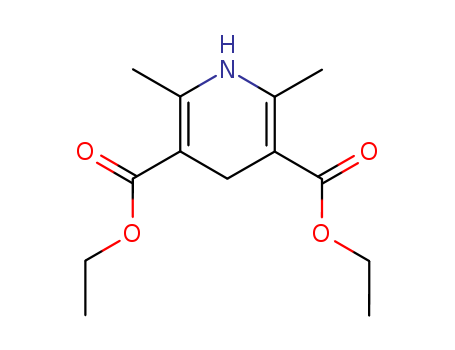- Chemical Name:Diethyl 1,4-dihydro-2,6-dimethyl-3,5-pyridinedicarboxylate
- CAS No.:1149-23-1
- Molecular Formula:C13H19NO4
- Molecular Weight:253.298
- Hs Code.:29333990
- European Community (EC) Number:214-561-6
- NSC Number:120573,3344
- UNII:GWN6123BUG
- DSSTox Substance ID:DTXSID80150895
- Nikkaji Number:J140.363J
- Wikipedia:Hantzsch_ester
- Wikidata:Q27279321
- ChEMBL ID:CHEMBL1521734,CHEMBL3194512
- Mol file:1149-23-1.mol
Synonyms:2,6-dimethyl-3,5-dicarbethoxy-1,4-dihydropyridine;2,6-dimethyl-3,5-diethoxycarbonyl-1,4-dihydropyridine;diethone;diludin;diludine;DM-DEOC-DHP;ethidin;etidin



 Xi
Xi


